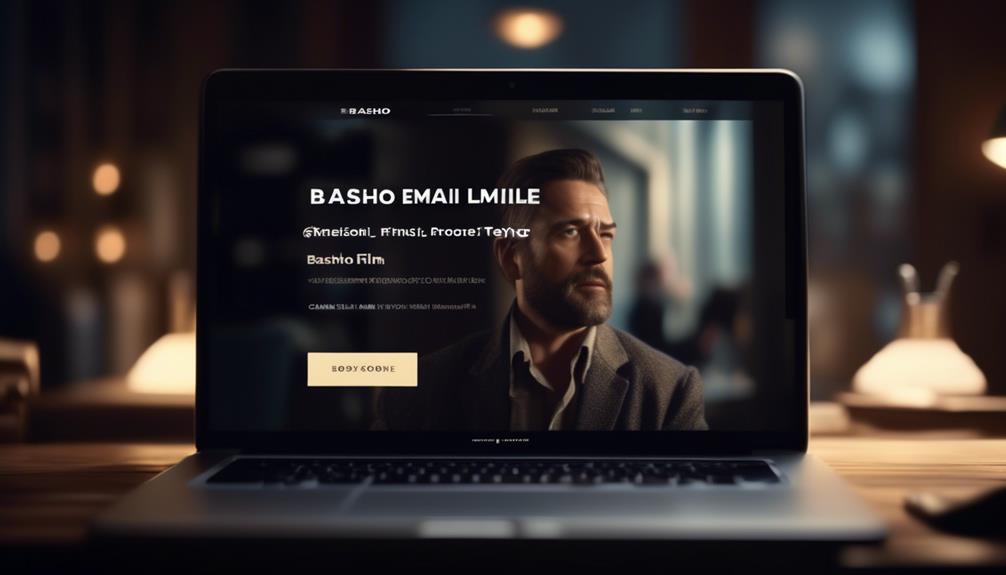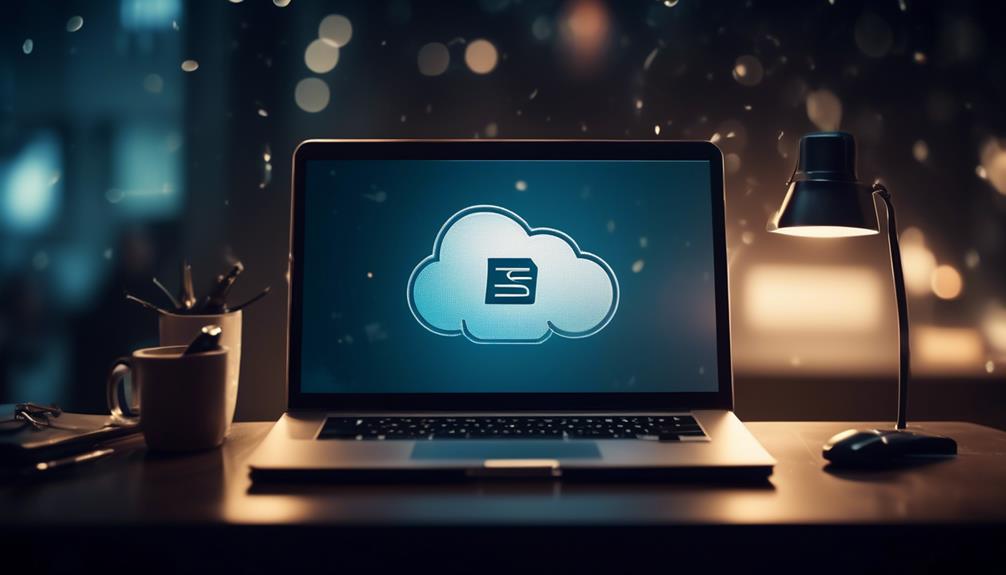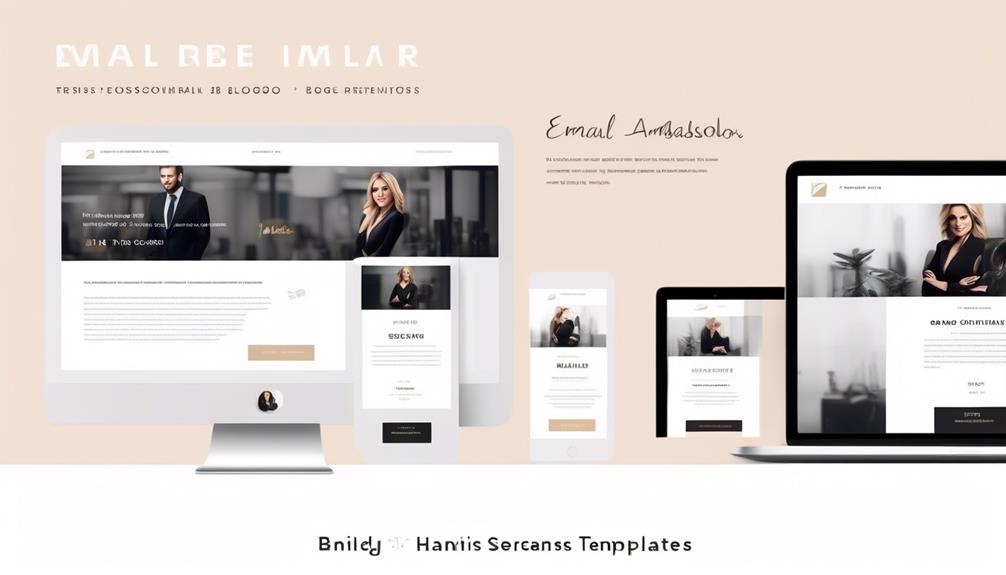As sales experts, our constant aim is to find the perfect balance between efficiency and personalization in our outreach strategies. The Basho Email Template provides a promising solution for achieving this mix.
It's a structured approach that combines personalized research with compelling messaging to captivate potential clients. But how does it actually work in practice?
Let's explore the intricacies of this template and how it can elevate our outreach game to new heights.
Key Takeaways
- BASHO emails are personalized sales emails designed to engage decision makers.
- They require a research-intensive approach and heavy personalization.
- BASHO emails deliver better open rates, more replies, and increased response rates.
- Attention to detail, compelling subject lines, and personalized emails are crucial in crafting an effective BASHO email structure.
What Is a BASHO Email?
When crafting a BASHO email, it's essential to understand that it's a highly personalized sales email designed to directly engage decision makers with the aim of securing a meeting or scheduling a demo.
A BASHO email involves a research-intensive approach and requires heavy personalization for each recipient, making it more effective for high-value prospects. This personalized email strategy is crucial for Business Development as it significantly increases the chances of capturing the prospect's attention.
To achieve this, sales reps must carefully construct the subject line to entice the recipient, write a compelling hook that addresses the prospect's problem, and provide clear, straightforward next steps. By following this approach, the email is more likely to yield a higher response rate and better opportunities to connect and build relationships.
BASHO emails offer an advantage over traditional email templates by delivering better open rates, more replies, and increased response rates, particularly for high-value accounts.
For Business Development, mastering the art of crafting BASHO emails is essential for engaging important prospects and driving successful sales outcomes.
Building an Effective BASHO Email Structure

Crafting an effective BASHO email structure requires a research-intensive approach and heavy personalization, directly engaging decision-makers to secure meetings or demos.
When building an effective BASHO email structure, attention to detail is crucial. Compelling email subject lines are essential to capture the recipient's attention. Personalized emails with the prospect's name significantly increase open rates and demonstrate genuine interest.
The body of the email should focus on addressing the recipient's pain points and offering valuable solutions. It's important to clearly outline the next steps, whether it's a call to action or a request for a meeting. Additionally, a conversational tone helps in starting a conversation, making the email feel more personal and engaging.
Building an effective BASHO email structure also involves conducting thorough research to understand the recipient's needs and challenges.
Making It All Work With a Winning BASHO Sequence

We approach the task of executing a winning BASHO sequence with a keen focus on initiating impactful contact and delivering compelling value at each stage of the process.
The key to making it all work with a winning BASHO sequence lies in understanding the contextually relevant keywords and incorporating them strategically in the sequence.
Our article section emphasizes the importance of a well-structured BASHO email template that aligns with the winning sequence. By integrating the right keywords at each stage, we ensure that our communication isn't only engaging but also highly persuasive.
The winning BASHO sequence involves making first contact, providing additional value, and sending a structured email to effectively engage prospects. It's crucial to maintain the momentum and engagement by clearly outlining the next steps in the sequence.
With a focus on mastery, our approach aims to move prospects through the sales process with personalized, targeted communication.
This winning approach to the BASHO sequence ensures that our emails work cohesively within the template, leading to successful outcomes in our endeavors.
BASHO Email Examples to Learn From

In our pursuit of mastering successful BASHO email sequences, we've gathered compelling examples that offer valuable insights and inspiration for crafting impactful communications.
When examining BASHO email examples, the subject line plays a crucial role in capturing the recipient's attention. For instance, a subject line that addresses a specific pain point or presents a compelling benefit can significantly increase open rates. Additionally, personalization is a key aspect of the BASHO technique, and effective examples showcase how personalized messages resonate with recipients, leading to a higher response rate.
Furthermore, successful BASHO email examples demonstrate the BASHO strategy in action, seamlessly incorporating a hook that captivates the reader, addressing the recipient's challenges, and providing clear next steps for engagement. These examples also exemplify the power of BASHO emails in B2B cold outreach, illustrating how the technique fosters genuine connections and accelerates sales processes.
Can the Techniques Used in Creating Eloqua Email Templates be Applied to Basho Email Templates?
Yes, the techniques used in creating Eloqua email templates can indeed be applied to Basho email templates. By following stepbystep Eloqua email templates, marketers can ensure a seamless transition and maintain a consistent and professional look across both platforms.
Crush Your Outreach With a BASHO Email Strategy
As we aim to excel in our outreach efforts, leveraging a BASHO email strategy holds the key to capturing the attention of decision-makers and securing valuable engagements.
BASHO emails, when executed effectively, can significantly enhance our marketing and sales outreach by improving open rates, increasing response rates, and ultimately leading to more fruitful engagements with high-value prospects.
Crafting a successful BASHO email involves meticulous research on the prospect and company, personalized email subject lines, and compelling call-to-action content that resonates with the recipient. This targeted approach can yield better results, especially when conventional outreach methods have been exhausted.
By incorporating tools like SalesHandy, we can streamline the personalization process, saving time while maximizing responses.
Embracing a BASHO email strategy empowers us to engage with decision-makers in a more personalized and effective manner, ultimately increasing the likelihood of securing valuable opportunities.
With a well-thought-out BASHO email template, we can elevate our outreach game and achieve greater success in engaging high-value prospects.
Frequently Asked Questions
What Is a Basho Style Email?
A Basho style email is a highly personalized sales email sent directly to decision makers in other companies with the goal of booking a meeting or scheduling a demo. It involves crafting effective subject lines, writing a hook to entice the target, addressing the target's problem and what you can do about it, and wrapping it up with clear, straightforward next steps.
This approach is designed to better open rates and foster more replies.
How Do You Write Basho?
How do we write a BASHO email?
We conduct thorough research, craft a compelling subject line, personalize the hook, emphasize our product's value, and include a clear call to action.
This approach yields better open rates, more replies, and increased response rates for high-value accounts.
BASHO emails are ideal for establishing connections with decision-makers, streamlining the sales process, and building rapport.
Ready to start meaningful conversations with important prospects?
Is Basho an Acronym?
Yes, Basho is indeed an acronym. It stands for 'Basho And Friends,' a brand offering renowned sales training programs.
The BASHO email strategy focuses on personalized emails to decision-makers, yielding over 65% success rates. Salesforce.com teaches and deploys BASHO emails, making it a recognized and effective sales strategy.
The aim is to capture attention, with response rates exceeding 50%. This acronym represents a powerful and proven approach in the sales industry.
What Is Basho Sales Methodology?
The BASHO sales methodology is a research-intensive approach that involves heavy personalization for each recipient. It aims to book meetings or schedule demos with decision-makers by crafting highly personalized sales emails.
This methodology leads to better open rates, more replies, and increased response rates for high-value prospects. It effectively streamlines the sales process, helping us build rapport and initiate conversations with important prospects through personalized communication.
Conclusion
In conclusion, mastering the art of BASHO emails can open doors to meaningful connections and valuable opportunities in the B2B world. Like a skilled painter, we carefully craft each email to resonate with the recipient, creating a masterpiece of personalized communication.
By focusing on the prospect's needs and pain points, we can build trust and drive engagement, ultimately leading to successful business relationships.
Embrace the power of BASHO emails and watch your outreach efforts flourish.









